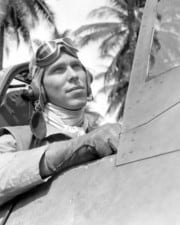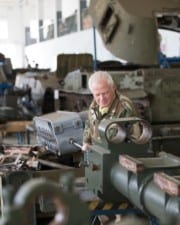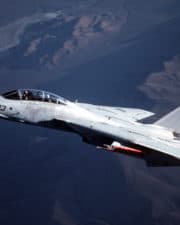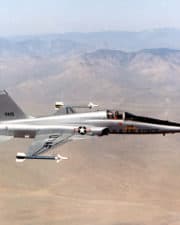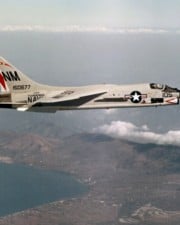The most interesting and powerful old military planes that are still in service today. Some of these planes were created to be the backbone of our country’s air force, and they continue to serve their purpose decades later. Some served other countries, and they deserve a spot on this list too, for it is quite an engineering marvel to be still relevant 70 years after being developed.
Table of Contents
- 12. Hawker Siddeley HS 748 (1960)
- 11. Northrop T-38 Talon (1959)
- 10. Mikoyan-Gurevich MiG-21 (1959)
- 9. Pilatus PC-6 Porter (1959)
- 8. Boeing KC-135 Stratotanker (1956)
- 7. Lockheed U-2 (1955)
- 6. Boeing B-52 Stratofortress (1955)
- 5. Fokker F27 Friendship (1955)
- 4. Lockheed C-130 Hercules (1954)
- 3. Tupolev Tu-95 (1954)
- 2. Antonov An-2 Colt (1947)
- 1. De Havilland Canada U-6A Beaver (1947)
This article does not list any fighter jets except one noteworthy example. If you are interested in more: oldest fighter planes still in service.
The advancement of technology is occurring at crazy speeds. Every year, technology advances in leaps and bounds, ushering in new ideas and pushing out old ones. This is true in most areas of technology, such as cell phones and computers, but it reaches an odd compromise in military applications.
Developing a new military vehicle is a complex endeavor that demands an entirely different approach to innovation and the clearing of various regulatory hurdles before any progress can be made.
That is the reason that some military planes just keep being serviced and serve the air force, navy and army of several countries around the world. Keep reading to learn about 10 military planes that have been in service with their air force operators for more than 50 years.
12. Hawker Siddeley HS 748 (1960)

The Avro Hawker Siddeley HS748 is a British military aircraft and cargo with twin turboprop engines. Since the 1960s, the aircraft, which can transport 48 paratroopers or six tonnes of cargo, has been in the IAF fleet.
In technical partnership with the British aircraft and engine producers, Hindustan Aeronautics Limited (HAL) began production of the Avro (later Hawker Siddeley ) 748.
These aircraft were primarily procured and then constructed to satisfy the Indian Air Force’s specifications.
Two Rolls-Royce Dart engines powered the HS 748, making it a flexible regional aircraft. The HS 748 was designed and built to replace the Douglas DC-3 and could transport 44 to 52 passengers in the cabin. On April 1, 1961, the type was introduced into service with launch client Skyways Coach-Air.
11. Northrop T-38 Talon (1959)

This two-seater trainer aircraft is probably one of the most interesting jets on this list. It was first developed as a replacement for the F-5 and F-86 jet fighters, but it still serves as an advanced trainer aircraft for the United States Air Force, NASA and a few other countries. When it was first used by all these organizations, it flew a total of 2 million flight hours without a single loss of life or aircraft due to accidents!
The Northrop T-38 Talon fights the sound barrier, but it doesn’t go over it, instead it keeps flying at supersonic speeds for a few minutes after passing through. The reason why this aircraft is still in service today and hasn’t been replaced by another modern jet fighter like the F-15 Eagle or F-22 Raptor is because pilots love to fly them. The reason why the pilots love it so much is because of its great performance and human engineering.
10. Mikoyan-Gurevich MiG-21 (1959)
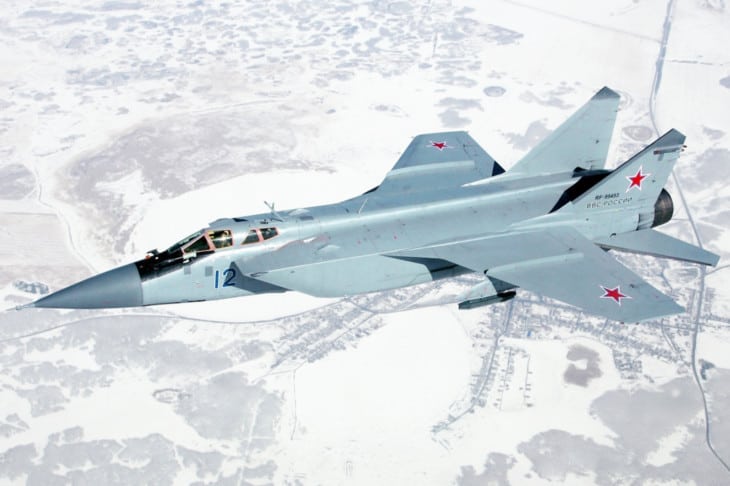
I know, I said I wouldn’t talk about fighter jets in this article, but this one deserves an exception, because the MiG-21 is the oldest fighter jet still in service.
The Soviet Union definitely produced some of the most interesting jets, yet not all of them are doing well, like the K-8 and MiG-15. The MiG-21 however is one of those aircraft that we can call a success, as it was developed back in 1959, and it still serves several forces around the world today. It has been exported to at least 24 countries, not all of them are using it though because there have been reports of low serviceability and accidents.
9. Pilatus PC-6 Porter (1959)
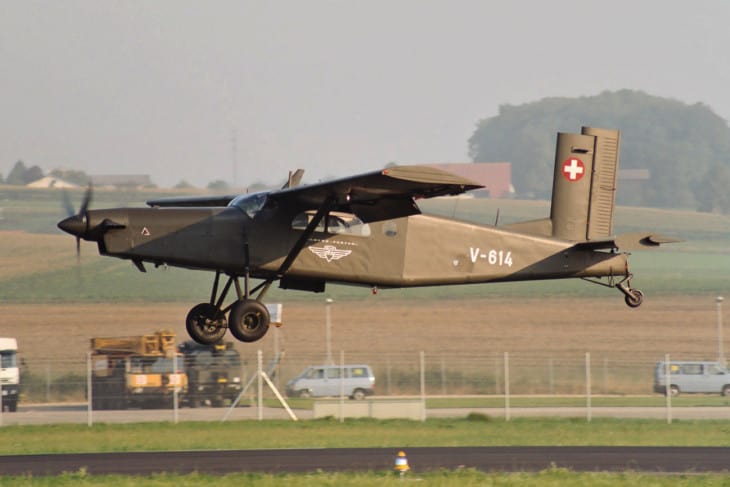
The PC-6 is a shoulder-wing airplane with a fixed alighting gear and tail wheel that is powered by a propeller turbine. Even on the most challenging surfaces, it is known for its superb “short take-off and landing” capabilities. It’s also ideal for parachuting, as evidenced by the name.
However, there was still a lot of work to be done before the plane was finished in April 2005. First and foremost, the Porter had a complete service as well as a completely new inside. The exterior shell was repainted, and the Austrian license was issued after new avionics were installed in accordance with IFR (Instrument Flight Rules) standards.
In addition, to comply with environmental regulations, a four-blade propeller replaced the old three-blade propeller. When it was all said and done, the HSV had achieved a long-held goal.
8. Boeing KC-135 Stratotanker (1956)

The KC-135 was built primarily for refueling planes and was the Strategic Air Command’s only tanker for 15 years. In the mid-1990s, more than 600 of the 732 tankers produced were still in service.
Its tanker substituted the KC-97 tankers, which couldn’t keep up with the jet fighters and bombers. The first KC-135 rolled out of the facility in 1956, sharing the Renton tarmac with the last KC-97, demonstrating the Boeing Company’s entire switch to jet power.
This aircraft performed 813,000 aerial refuelings of combat aircraft during the Vietnam War’s nine years. Its tankers performed 18,700 hookups and transferred 278 million pounds of gasoline during the Persian Gulf War.
7. Lockheed U-2 (1955)
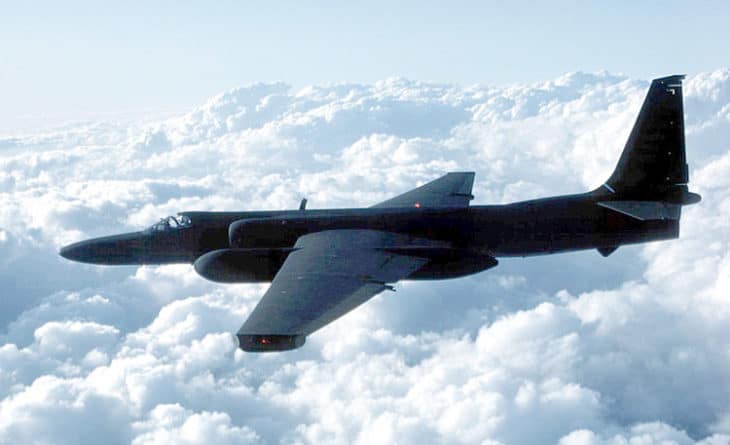
U-2 is a single-seat, high-altitude jet plane used by the US for intelligence gathering, observation, and reconnaissance. This aircraft is also known as the Dragon Lady and has been in operation since 1956. It is perhaps the most renowned spy plane ever built. The first prototype took to the air in 1955, and the final plane in the series was completed in 1989.
Pilots refer to the U-2’s cruising altitude as “coffin corner” because it operates at such a high altitude with a razor-thin margin between maximum and stall speeds.
The aircraft’s slim shape makes it difficult to see at times. Pods, spiky antennae, unexplained bulges, and nosecones conceal the sensors, radar, cameras, and communication devices it requires to carry out its tasks.
These many sensors can be inserted into the plane in the same way as a model kit would be. One urban legend claims that one of these bulges or pods includes a cloaking device, which sends out an electronic signal that makes it invisible to radar.
6. Boeing B-52 Stratofortress (1955)

The B-52 was first put into service in 1955, and the first B-52H, the current version, was introduced in 1961. This bomber is the air force’s granddad, aged but still capable of delivering a devastating punch.
From precision-guided conventional bombs to nuclear warheads, the plane can carry 70,000 pounds of armaments. While the B-2 stealth bomber and B-1 supersonic bomber may be withdrawn when the B-21 is released, the Air Force intends to upgrade the B-52’s reliable engines to increase efficiency and performance.
The B-52A had its first flight in 1954, and the B model followed in 1955. Furthermore, the last B-52, a B-52H, was delivered in October 1962, making a total of 744 B-52s constructed.
In May 1961, the first of 102 B-52Hs was delivered to Strategic Air Command. The H type may carry up to 20 cruise missiles that are launched from the air. It can also carry the conventional cruise missile, which was used in a variety of scenarios throughout the 1990s, beginning with Operation Desert Storm and ending with Operation Iraqi Freedom.
5. Fokker F27 Friendship (1955)

The Fokker F27 Friendship is a short-to-medium-range aircraft with two Rolls-Royce Dart turboprop engines. It is one of the most successful European planes ever constructed, having first flown on November 24, 1955.
This aircraft was created to be a substitute for piston-engine planes like the Douglas DC-3. The first airline carrier was Ireland’s Aer Lingus, which received two planes on November 19, 1958, and began flying in December of that year.
4. Lockheed C-130 Hercules (1954)

The Hercules is the RAF’s primary tactical transport aircraft, and since its introduction in 1999, it has served as the backbone of UK operational-tactical mobility tasks in its current C.Mk 4 and C.Mk 5 versions of the C-130J-30 and C-130J, respectively.
It is commonly used to conduct operations in countries or locations where aircraft are threatened; its performance, tactics, and defensive systems make it a perfect platform for such missions.
This plane is extremely adaptable, with the capacity to airdrop a wide range of supplies and paratroopers and to land on natural surfaces. Hercules crews must be highly competent at low-level flying to do these missions.
The aircraft uses night-vision goggles (NVGs) to accomplish the same tasks at night, while station-keeping equipment allows it to maintain formation in bad weather. Air-to-air refueling improves long-range capabilities, and the Air Survival Rescue Apparatus may be placed in the cabin for search and rescue operations, allowing the Hercules to airdrop rescue boats and emergency supplies.
3. Tupolev Tu-95 (1954)

Tupolev Tu-95 was designed as a strategic, intercontinental heavy-payload bomber jet and has been produced in a variety of Tu-95 and Tu-142 variants. The Russian Air Force Naval Aviation and Russian Air Force Air Army units, as well as the Indian Air Force, use this aircraft.
This plane was designed and constructed by the Tupolev Joint Stock Company aviation plant in Moscow. It made its first flight in 1954 and entered service in 1956.
Until the termination of the Cold War, Tupolev aircraft conducted long-range patrols around NATO and US airspace. After a 15-year absence, President Vladimir Putin stated in August 2007 that the Russian Air Force would restart long-range patrols using Tu-95 and Tu-160 strategic bombers.
2. Antonov An-2 Colt (1947)

The Antonov An-2 first flew in August 1947 and has a record-setting production run and flying career spanning four decades. It was the first design of Oleg K. Antonov’s OKB-153 Design Bureau, which was situated in Kiev, Ukraine.
Originally intended for civil utility applications, the An-2’s adaptability allowed it to be used in a variety of functions, including transportation, search-and-rescue, agricultural and forestry, geographical survey, bombing raids, and research. Military variants were used by the Soviets, then the Russian military, and their allies. The aircraft was given the code name “Colt” by NATO, but it is known as “Annushka” throughout the former Soviet Union.
An-2 is one of the world’s largest single-engine biplanes. It was appreciated for its adaptability as well as its exceptional slow-flight, short takeoff, and landing characteristics.
The aircraft has no stated stall speed, and pilots have been known to fly it at 30 mph while maintaining complete control. This, paired with its capacity to work in undeveloped and distant operational settings in extreme weather and on muddy, temporary runways, made it an ideal jet.
1. De Havilland Canada U-6A Beaver (1947)
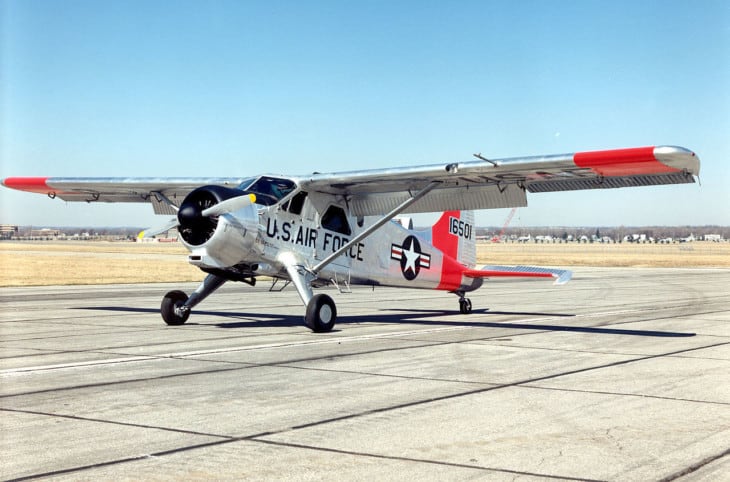
U.S. Navy test pilots use the U-6A Beaver to tow the X-26 Frigate sailplane for test pilot school trainees. The Beaver was created as a versatile utility that could be fitted with wheels, skis, normal floats, or amphibious floats.
Its wings are rectangular with blunt tips and are positioned high on the body. The nose part has a single piston engine. A later iteration, the MK III, includes a turboprop engine, which dramatically alters the nose layout. The fuselage is formed like a club, with a blunt nose and a steeply tapering tail.
Tail flats are evenly tapered with blunt tips and are positioned high on the body. It had a camera hatch in the belly and could be outfitted with canoe racks. This plane has been used for a variety of transportation needs all around the world.
Russ Brannock flew the prototype (CF-FHB-X) for the first time on August 16, 1947, at the DH Factory in Downsview.
Related Posts


